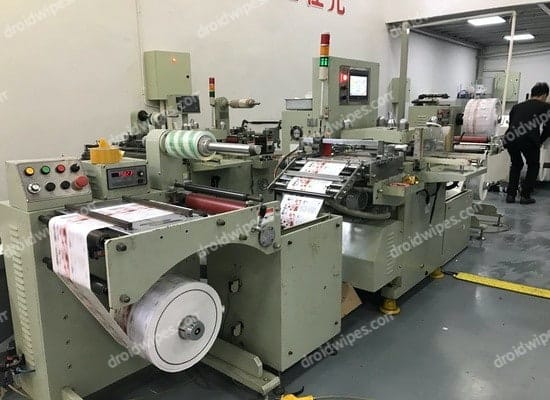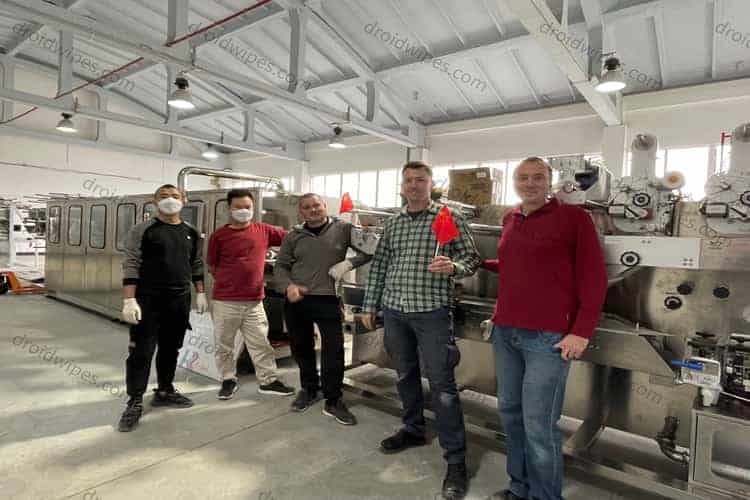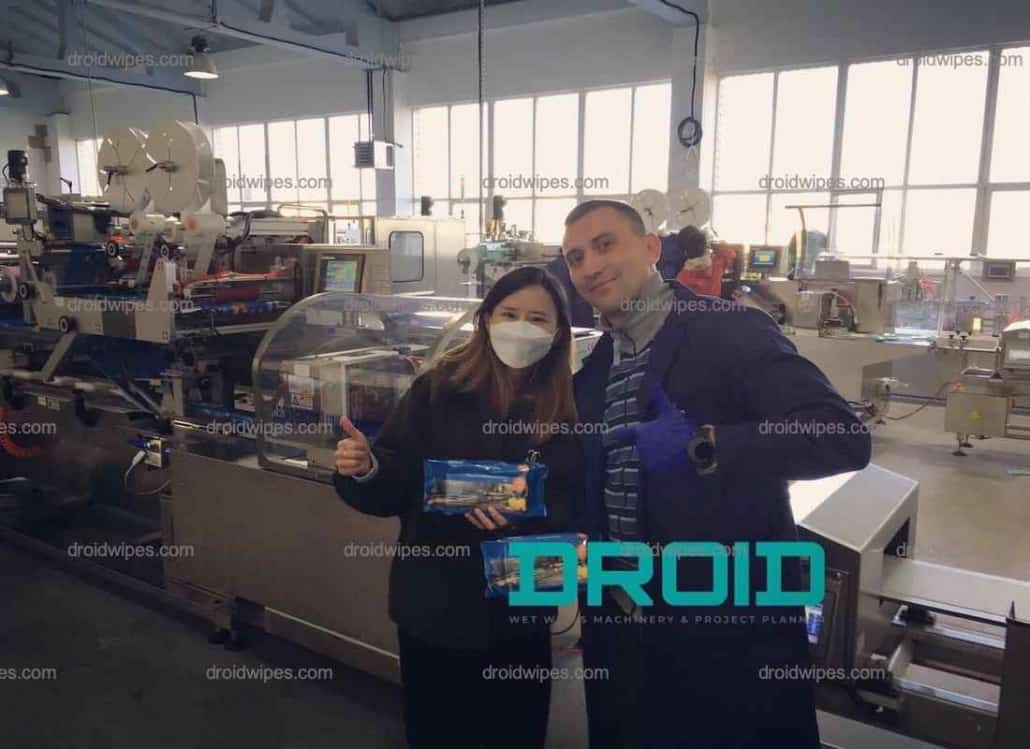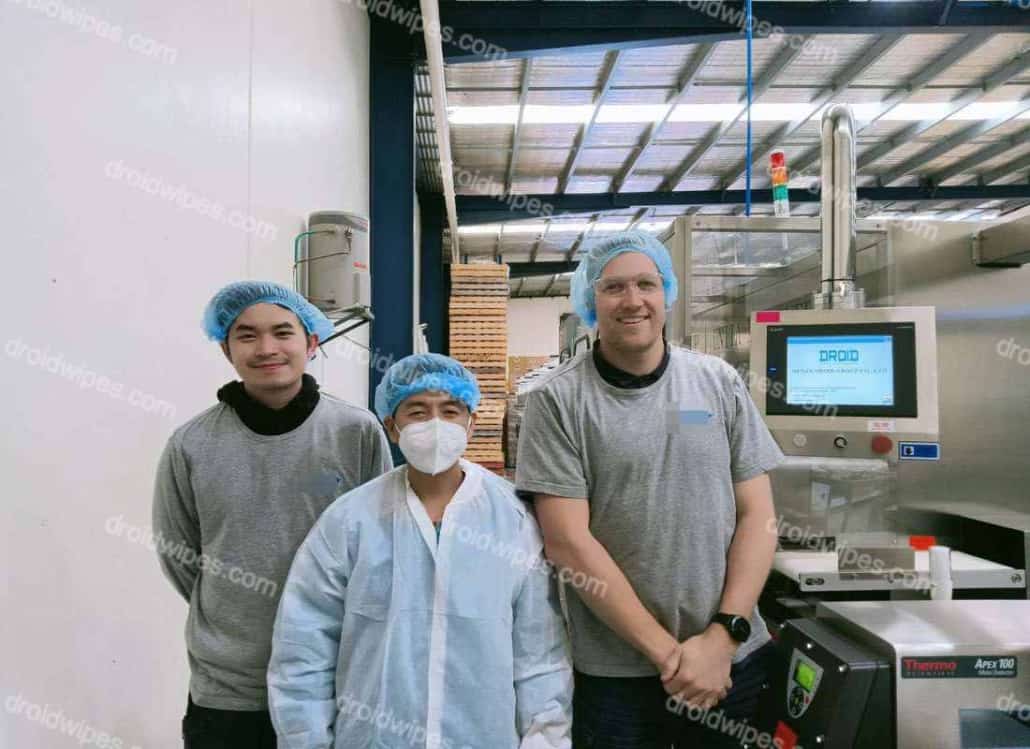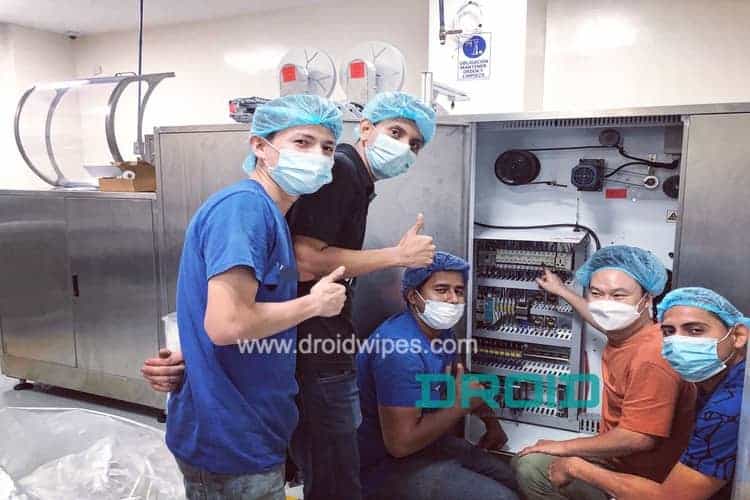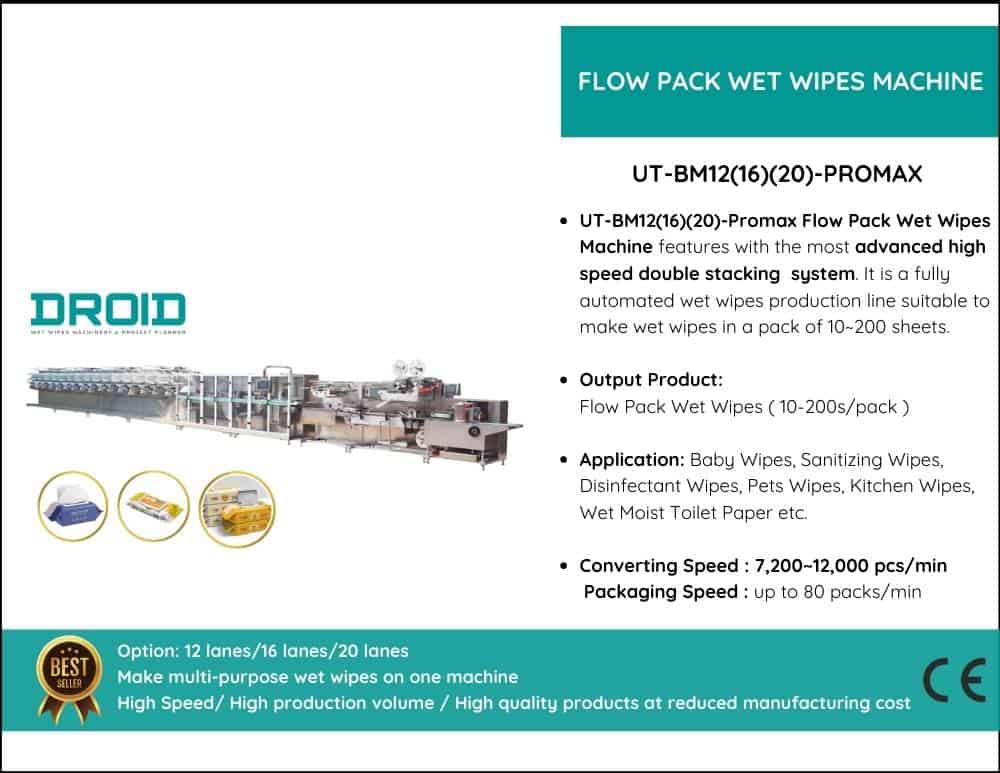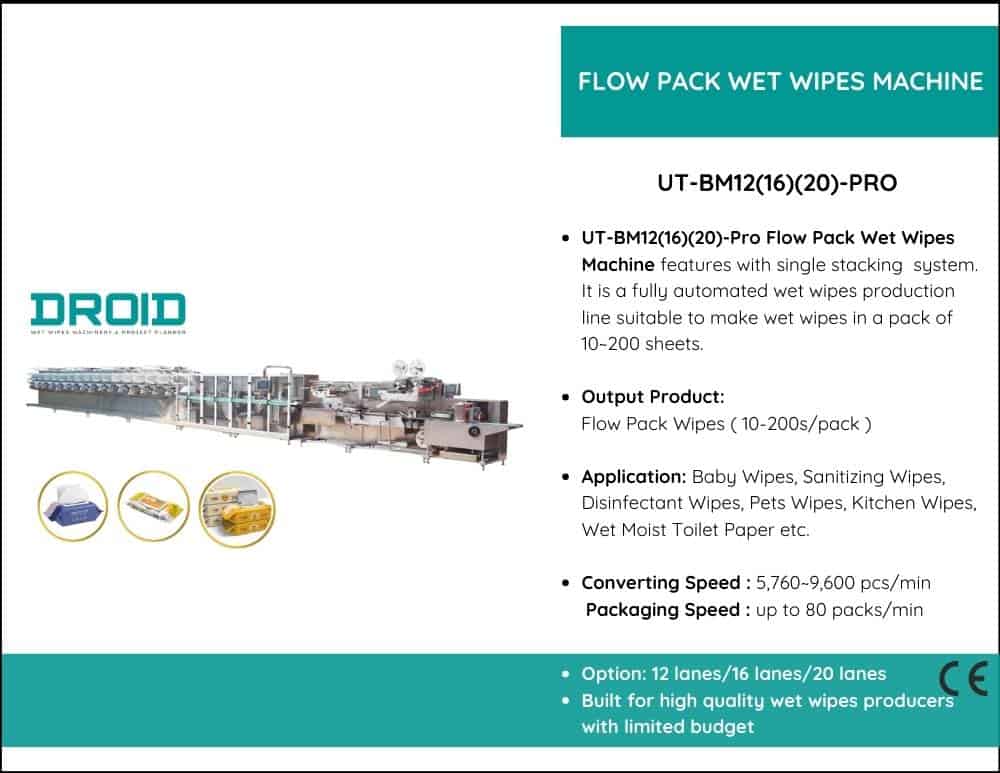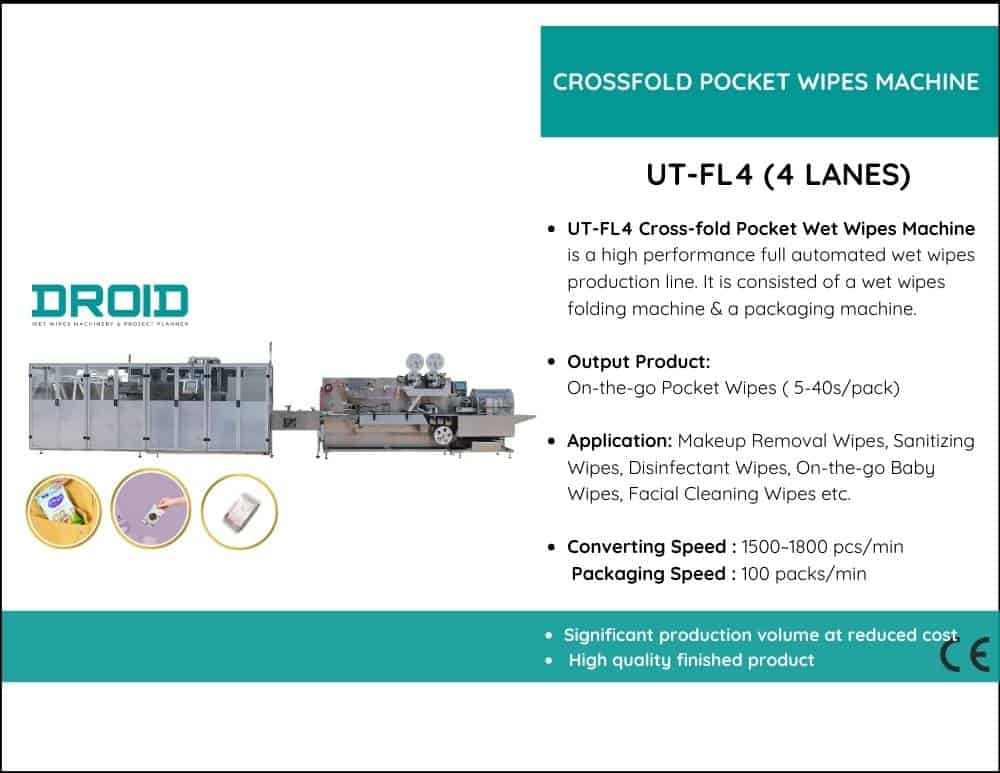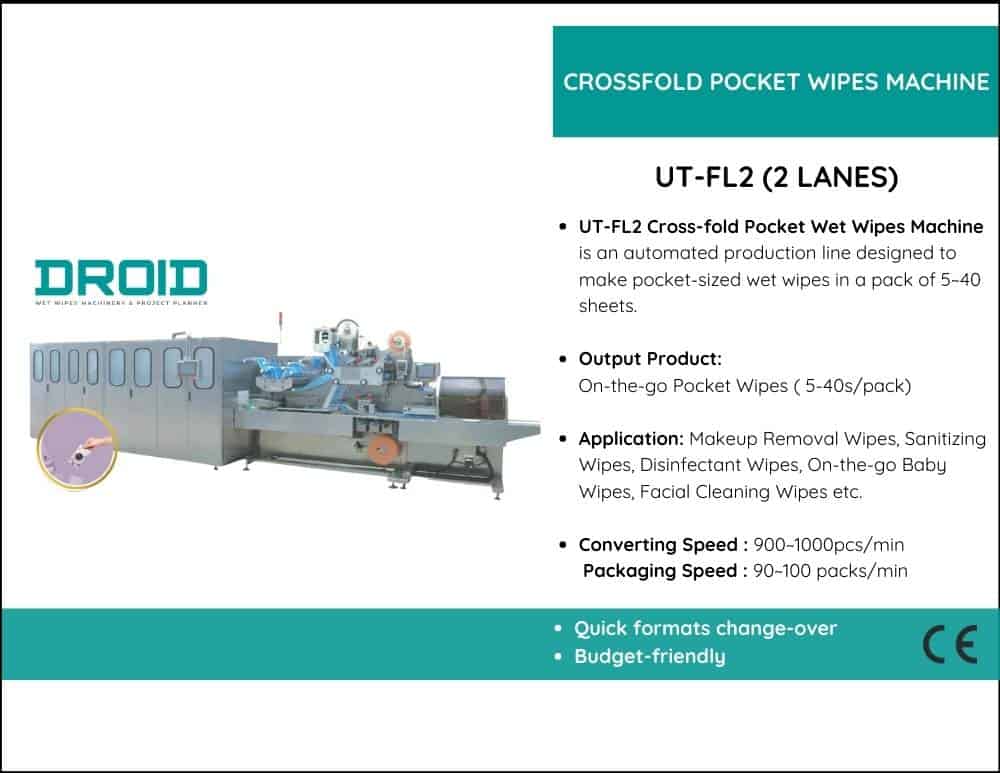A lot of companies believe that automation only entails “reducing manpower.” In actuality, intelligent automation aims to increase productivity rather than decrease it.
Production lines for contemporary wet wipes, like DROID’s servo-driven FL-series, are designed to accomplish more with the same workforce than just replacing humans with machines. Every operator can manage more production capacity with less involvement thanks to automated tension and cutting systems, servo synchronisation, and advanced PLC control.
For instance, self-adjusting folding accuracy, recipe memory for product forms, and automated film splicing significantly reduce the time required to switch between SKUs. With a few touches on the touchscreen, operators may go from baby wipes to disinfection wipes without having to adjust every setting manually.
This kind of intelligent automation attains three main advantages:
- Increased efficiency: Equipment continuously operates at a constant pace and quality.
- Waste reduction: Accurate control reduces material loss due to over-cutting or misalignment.
- Increased uniformity: Regardless of operator competence, every pack has the same appearance and seals.
Therefore, “smarter automation” isn’t about putting fewer employees on the floor; instead, it’s about enabling your current workforce to use technology to produce more, better, and more consistent results.
When done correctly, automation turns labour-intensive manufacturing into knowledge-driven processes where humans concentrate on optimisation while robots manage repetitive tasks.



